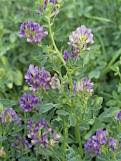The Common sundew is an evergreen, insectivorous, (or carnivorous) plant which is native to parts of Europe including Britain Mediterranean , North America and northern Asia . It is a semi-aquatic plant, preferring to grow in moist if not wet places such as on the edges of ponds. Its main claim to fame is that Charles Darwin devoted the first chapter of his book “Insectivorous Plants” published in 1875 to the common sundew. It is one of three members of the Droseraceae family found in Britain
It used to have some reputation as an aphrodisiac, especially when in the cordial made by distilling the plant, which was called Rosa solis or rosolio which is thought to have first been concocted in Turin Rosa solis washed down the kissing comfits made from sea holly or eryngo.
 “Government and virtues. The Sun rules it, and it is under the sign Cancer. Some authors gravely tell us that a water distilled from this plant is highly cordial and restorative; but it is more than probable that it never deserved the character given of it in that respect. The leaves, bruised and applied to the skin, erode it, and bring on such inflammations as are not easily removed. The ladies in some parts mix the juice with milk, as to make an innocent and safe application for the removal of freckles, sun-burn, and other discolourings of the skin. The juice, unmixed, will destroy warts and corns, if a little of it be frequently put upon them. These are effects which pronounce its internal use to be dangerous; and if it is not productive of bad consequences, when distilled with other ingredients, for cordial waters, &c, it is because its pernicious qualities are not of a nature to rise in distillation.”
“Government and virtues. The Sun rules it, and it is under the sign Cancer. Some authors gravely tell us that a water distilled from this plant is highly cordial and restorative; but it is more than probable that it never deserved the character given of it in that respect. The leaves, bruised and applied to the skin, erode it, and bring on such inflammations as are not easily removed. The ladies in some parts mix the juice with milk, as to make an innocent and safe application for the removal of freckles, sun-burn, and other discolourings of the skin. The juice, unmixed, will destroy warts and corns, if a little of it be frequently put upon them. These are effects which pronounce its internal use to be dangerous; and if it is not productive of bad consequences, when distilled with other ingredients, for cordial waters, &c, it is because its pernicious qualities are not of a nature to rise in distillation.” While it is clear that Culpeper didn’t think very highly of this plant, in homeopathy it is used for respiratory problems and it has antispasmodic properties which relieve wheezing and chronic bronchitis. It has also been found to have antibacterial properties and the plant is at its most beneficial medicinally when it is in flower. It is best to harvest it just as it begins to bloom in summer. It lies dormant in winter but in spring is quick to trap an insect with its red hairs which are on the leaf, and then it slowly digests the captured insect with its enzymes which are secreted at the tip of its hairs.
 The plant contains a natural antibiotic, plumbagin, which kills a number of pathogens and it has antifungal properties too. At one time it was regarded as a cure for old age in the
The plant contains a natural antibiotic, plumbagin, which kills a number of pathogens and it has antifungal properties too. At one time it was regarded as a cure for old age in the  The juice from the plant has been used to curdle soya milk in the cheese-making process. This is useful if you are a vegetarian. However, the plant is now much rarer than it was in the past, so don’t harvest it from the wild. You can buy seeds and propagate the sundew at home in wet peat, and this will delight children who have a fascination for insectivorous plants.
The juice from the plant has been used to curdle soya milk in the cheese-making process. This is useful if you are a vegetarian. However, the plant is now much rarer than it was in the past, so don’t harvest it from the wild. You can buy seeds and propagate the sundew at home in wet peat, and this will delight children who have a fascination for insectivorous plants.















































